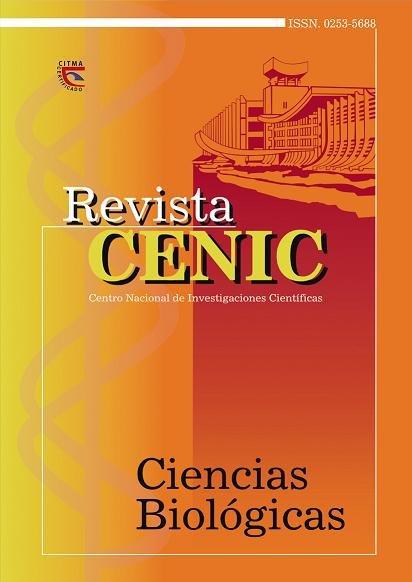Patogenicidad de los hongos Verticillium lecanii (Zimmermann) Viegas y Beauveria bassiana (Balm) Vuilleman a animales homeotermos
Abstract
The entomopathogenous fungus Verticillium lecanii (Zimm) Vieg (stump LBVl-2) and Beauveria bassiana (Balm) Vuilleman (stump LBBb-32) are broadly distributed and they have been evaluated under laboratory conditions against a great number of insect plagues as Anthonomus grandis Boheman, Bemisia spp. and Trialeurodes vaporariorum (Westwood), Schistocerca gregaria (Forskal), Plutella xylostella (Linnaeus) and aphids among other arthropods, that endorses their use in the control of plagues in the agriculture. The pathogenic action of those fungis was evaluated in mice and guinea pigs, providing them a conidium suspension of stumps in intraperitoneal applications and through the vagina. The possible pathogenic action of the fungal biopreparations from the above mentioned fungus was evalued, when they were given to mice through the nasal openings, with food and water and by contact, when the animalss body was sprinkled with the entomopathogenous solution. These last two trials were also valued on dogs and cattle. The applications on mice and cattle were carried out weekly during 6 months and were observed during 18 months, while the applications on dogs and cattle were done weekly, during the first two months and later every 30 d until turning two years. The animals subjected to treatments with V. lecanii and B. bassiana didnt show clinical alterations that could be registered by the veterinary; besides they didnt present either
tissues or organ alterations or presence of the microorganisms studied.
Downloads

Published
How to Cite
Issue
Section
License
Copyright (c) 2002 Copyright (c) 2002 Revista CENIC Ciencias Biológicas.

This work is licensed under a Creative Commons Attribution-NonCommercial-ShareAlike 4.0 International License.
Los autores que publican en esta revista están de acuerdo con los siguientes términos:
Los autores conservan los derechos de autor y garantizan a la revista el derecho de ser la primera publicación del trabajo al igual que licenciado bajo una Creative Commons Atribución-NoComercial-CompartirIgual 4.0 Internacional que permite a otros compartir el trabajo con un reconocimiento de la autoría del trabajo y la publicación inicial en esta revista.
Los autores pueden establecer por separado acuerdos adicionales para la distribución no exclusiva de la versión de la obra publicada en la revista (por ejemplo, situarlo en un repositorio institucional o publicarlo en un libro), con un reconocimiento de su publicación inicial en esta revista.
Se permite y se anima a los autores a difundir sus trabajos electrónicamente (por ejemplo, en repositorios institucionales o en su propio sitio web) antes y durante el proceso de envío, ya que puede dar lugar a intercambios productivos, así como a una citación más temprana y mayor de los trabajos publicados (Véase The Effect of Open Access) (en inglés).














